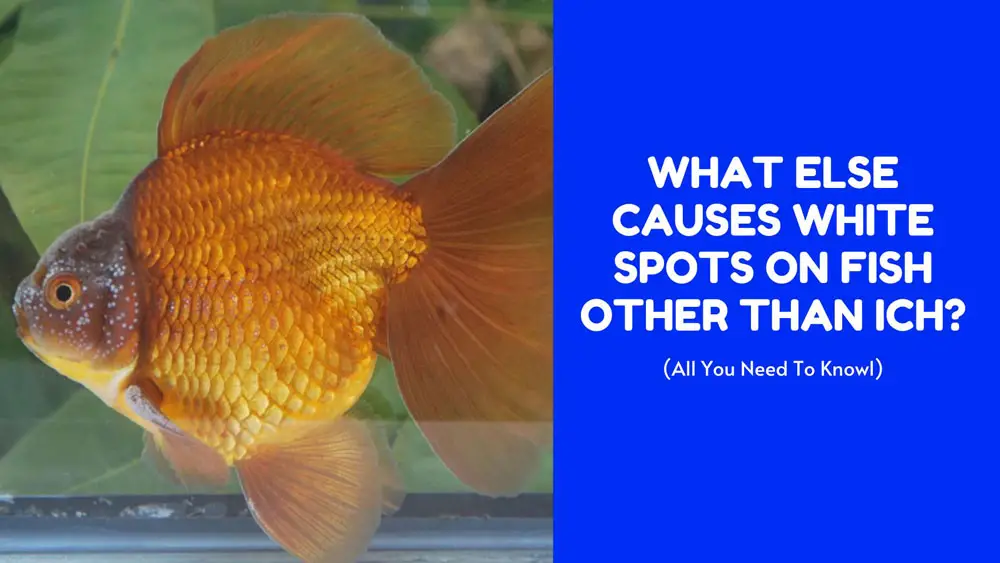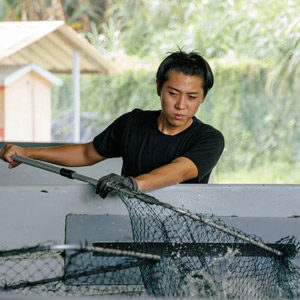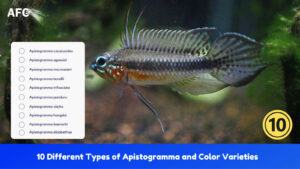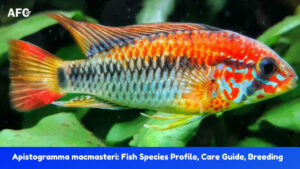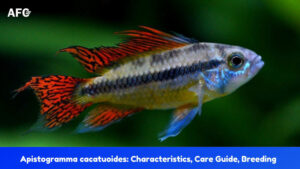If someone were to ask me what disease causes white spots on fish, my first thought would be Ich. After all, the main clinical sign of Ich is small white spots along the body of your fish.
However, there are other non-serious issues, and potential culprits can contribute to those pesky white spots appearing on your fish.
For an effective treatment, it’s critical to make a confirmed diagnosis. Sometimes, you may want an aquatic veterinarian to examine your sick fish under the microscope and give you specific medications.
In this article, let’s talk about what else causes white spots on fish other than Ich and how you can address each issue.
Diagnosing Ich in Freshwater Fish
Ich (mistakenly pronounced as “ICK”), or white spot disease, is caused by a large, ciliated protozoan, Ichthyophthirius multifiliis. All species of freshwater fish, both wild and captive, are considered susceptible.
Under a Microscope
In order to confirm a diagnosis of Ich in a freshwater fish, as we mentioned, your vet will look for the presence of Ichthyophthirius multifiliis in infected tissue under a compound microscope, even though it’s still not an easy task to make a quick determination because of the complicated life cycle of Ichthyophthirius multifiliis.
As with most aquarium parasitic diseases, it’s worth understanding this parasite’s entire life cycle. Not only can this help you identify the potential disease or point towards a different diagnosis, but it can also help you decide what kind of prevention and treatment strategies are appropriate for your fish.
Life Cycle of Ichthyophthirius multifiliis
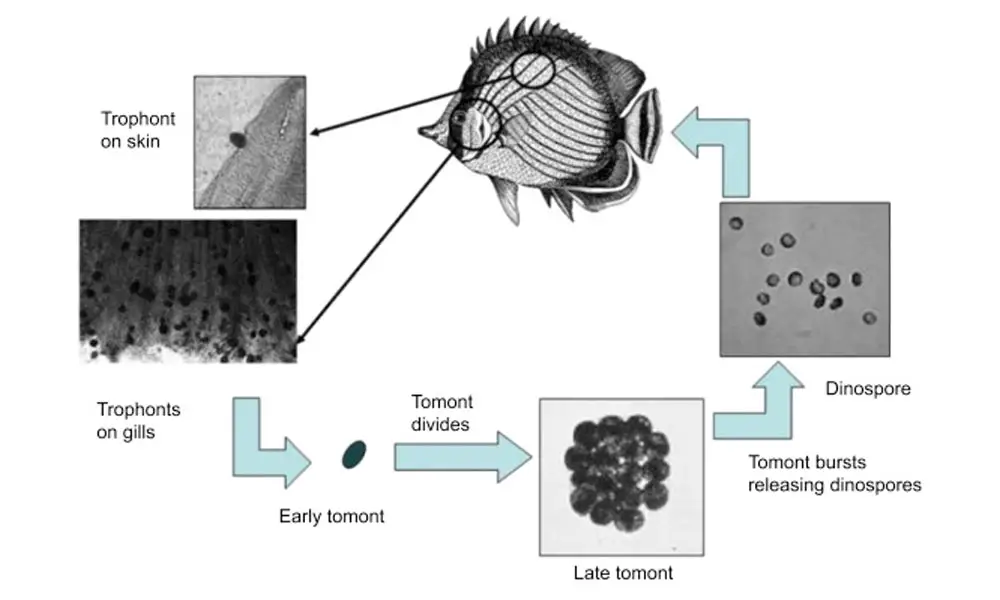
Despite its direct life cycle (doesn’t require different hosts or a vector), it is fairly complex and composed of three distinct stages:
Feeding stage (Trophozoites)
At this stage, the free-swimming dinospores attach to the fish’s skin, fins, and gills, feeding off the tissue fluids and becoming nonmotile parasitic trophozoites.
After three days to a week, the trophozoites mature into motile trophonts. The characteristic white spots of Ich are actually the tiny white capsule surrounding these mature trophonts, which measure 0.5 to 1.0 mm in diameter [1] and are visible to the naked eye.
The juvenile theronts are smaller, translucent, and spindle-shaped under the microscope. They look very similar to another ciliated protozoan called Tetrahymena (guppy disease). Therefore, it’s necessary to examine them closely until they reach maturity for a definitive diagnosis.
During this stage, both free-swimming dinospores and mature trophonts are covered by the fish’s epithelial tissue and mucus. As a result, the chemical treatments used in aquariums may be unable to penetrate the external shield of the parasite and be ineffective.
Replicating stage (Tomont)
Mature trophonts stop feeding and develop into tomonts. Some may leave the fish and drop off into the substrate or attach to plants and decoration, while others may remain on deep parts of the host’s tissue.
No matter where they go, a tomont quickly secretes and forms a thick gelatinous outer cyst that allows it to stick to aquarium surfaces. Inside each cyst, the tomont begins to replicate and produce 250 to 1000 tomites [2] in a day at warmer water temperatures.
The tomont and tomites are also protected by the cyst from the external environment and chemical treatments, which makes it difficult to eradicate at this point.
Free swimming stage (Tomites)
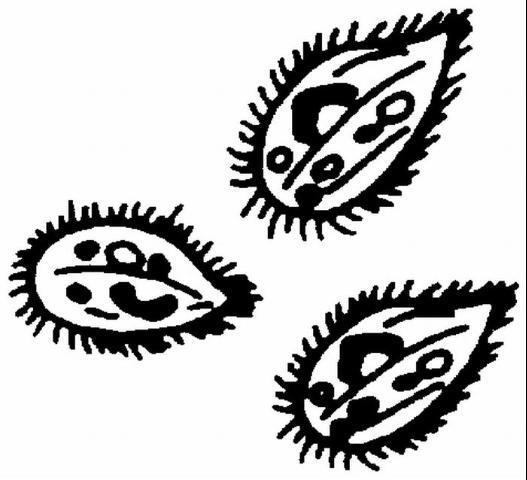
The incubation period can be 3- 5 days. Then tomites are released from the cyst and become free-swimming, infective dinospores in the water column. They start seeking out a new host, and the cycle can begin all over again, but this time with exponentially higher numbers.
This is the only stage where chemical medication can be effective since these free-swimming tomites are unprotected, and they must find a live fish within 2 to 4 days [3] at warmer water temperatures of 75 to 79° F (24 to 26° C), or they may die. In cooler water temperatures, they can potentially survive nearly 30 days.
Without a Microscope
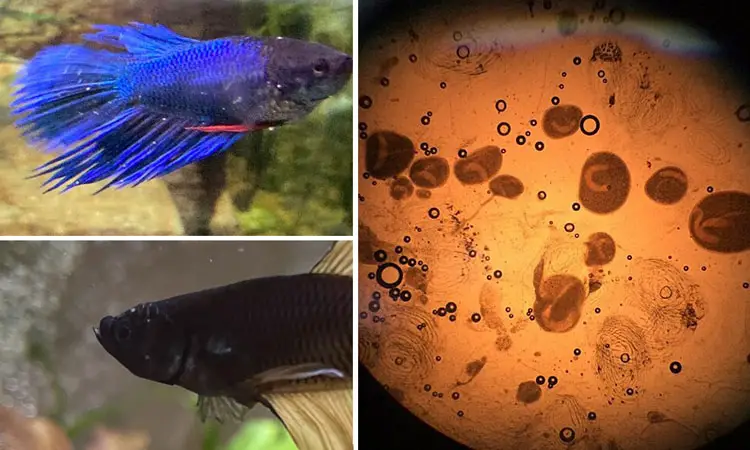
If you don’t have access to a microscope, you can diagnose it by closely observing the infected fish, including the physical signs and behavioral changes.
Once infested, your fish may exhibit the following symptoms:
- Rapid respiration: Because the gills are typically attacked before any other site, the early clinical signs are respiratory problems. You may see fish congregate around the areas of high oxygen content, such as filter outflows, powerheads, or air stones. Or even gasp for air at the surface.
- Clamped fins: As a result of stressed fish, clamped fins may also be an early symptom.
- Flashing: Fish often start scratching against objects in their environment. Signs like missing scales and trauma are indicators if you do not see this unusual behavior.
- White spots: The classic sign of this Ich is the presence of small white spots the size of a grain of salt scattered on the fish. It’s more easily observed at thin, transparent fins or tails. Try to look at these areas in some lighter-colored fish from different angles to see them better.
- Lethargy and loss of appetite: As the infestation progresses, your fish may become less active, eat less food and lose its coloration.
- Sudden death: In some severe cases, death can occur in as little as 12 hours as the tomonts sometimes be deeply colonized in the guts or esophagi of a host fish.
Non-serious Issues
Although Ich is easily visible on the fish’s tail or fins in the early stages, it can be notoriously hard to diagnose once there’s lots of slime coat on its body. These tiny, salt-like crystals are easily confused with several non-serious issues, including:
Stress Ich (Stress Spots)
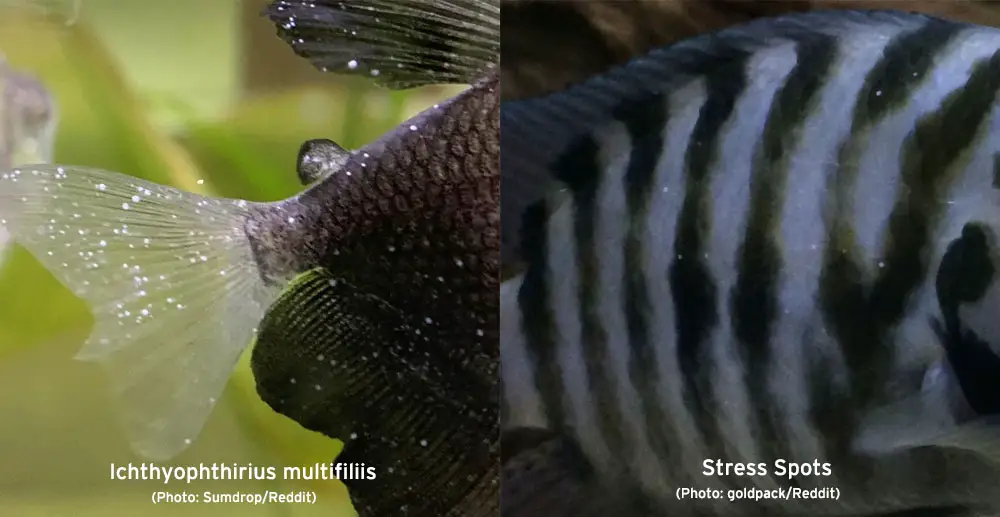
First, stress is bad. Most common diseases in aquarium fish can be traced to stress as the primary factor that weakens the fish’s immune system. When a fish is stressed, it can develop these temporary white spots.
Diagnose (Stress Ich Vs. Ich): Unlike Ich, “stress spots” usually result from hormones caused by poor water quality, an improper diet, overcrowding, or aggression; thus, they are not contagious. Affected fish may show the same number of white spots daily, and there will be no exponential growth. For example, if there are five spots on the fish today, you will observe approximately the same amount tomorrow.
Treatment: Determine and eliminate any sources of stress.
Fin Ray Fracture
Various fish in the wild commonly have cartilaginous rays that support their dorsal and anal fins. Fin ray fractures or breaks occur when a fish is injured due to physical trauma, netting and handling, or even fighting with aggressive fish species.
Diagnose: Fin ray fractures produce localized swelling, appearing as tiny, irregular pinkish spots in the fin rays. Only one or two per fish are usually seen.
Treatment: In most cases, these fractures naturally heal by themselves [4] over time.
Breeding Tubercles on Male Goldfish and Koi
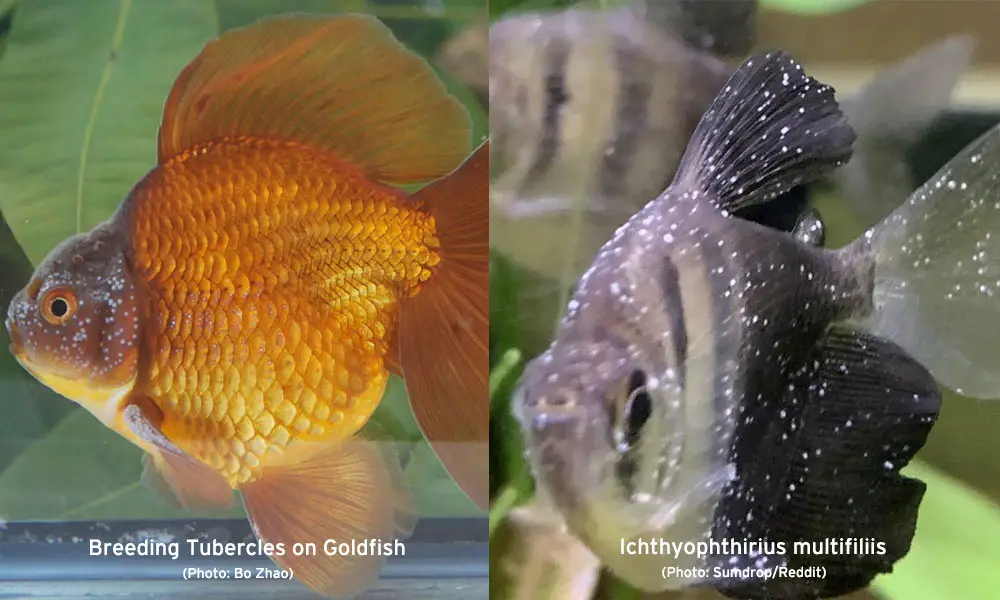
When male goldfish and koi mature, they develop multiple white bumps on the face, body, and pectoral fins. It is a normal condition, and those spots are called breeding tubercles.
Diagnose: If you look closer, each spot has a sandpaper-like rough texture, unlike Ich’s smooth plastic feel.
Treatment: These breeding tubercles will only last during the fish’s breeding period.
Parasites
Besides Ich (Ichthyophthirius multifiliis), several different parasites can cause white spots, including:
Guppy Disease (Tetrahymena)
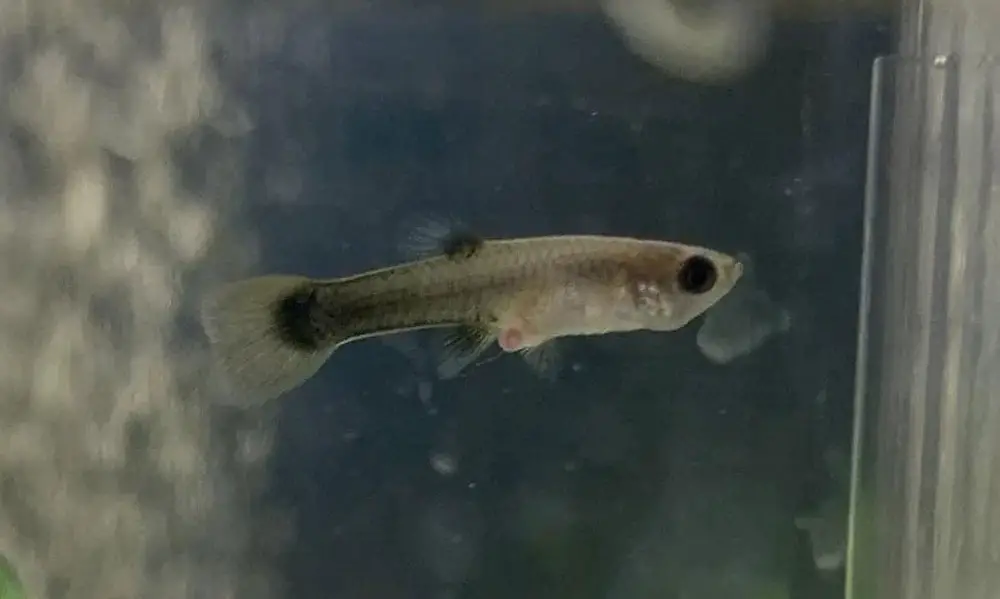
Guppy disease, often referred to as “guppy killer” among fish keepers, is caused by a group of ciliate protozoans called Tetrahymena. It can infect a wide range of fish species but is most commonly associated with guppies and other livebearers such as mollies and swordtails.
Diagnose: As mentioned above, Tetrahymena spp. often resemble juvenile theronts of I. multifiliis (Ich) with white spot-like cysts on the fish’s body and fins at the free-swimming stage. Therefore, it is nearly impossible to differentiate it from Ich without microscopic analysis.
Affected fish also show symptoms such as labored breathing, clamped fins, listlessness, and refusal to eat in the advanced stage of the disease.
In comparison to Ich, Tetrahymena spp. don’t need a live fish [5] to complete their life cycle, resulting in death much quicker. That could be why the fish died suddenly.
Treatment: Unfortunately, there is no reliable cure other than supportive care for Tetrahymena.
Epistylis
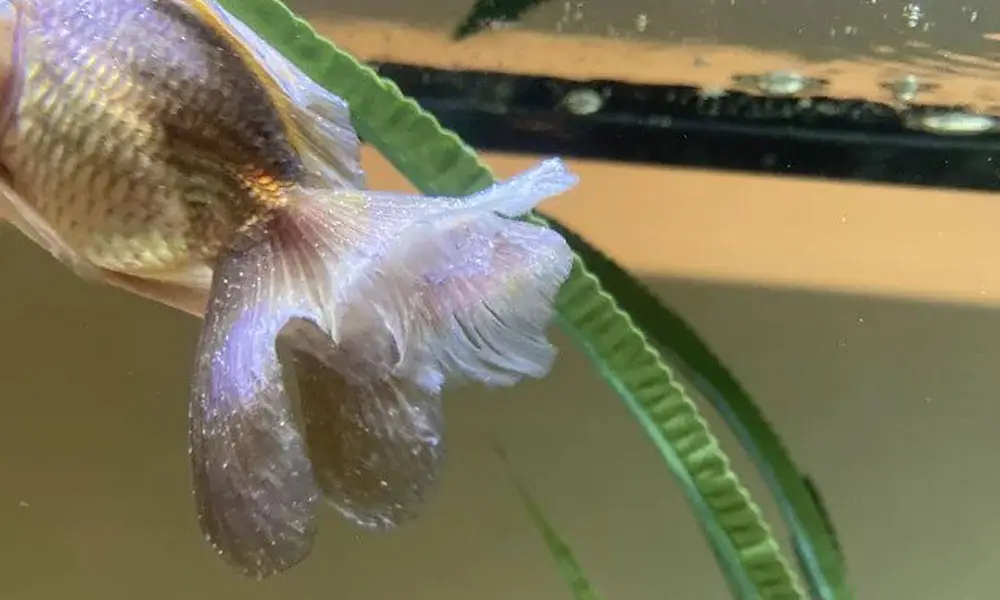
Epistylis, caused by the ciliated protozoa Epistylis spp., is a less-known disease affecting freshwater fish. Like Tetrahymena, it can be mistaken for Ich because of those little white spots on the eyes of this fish.
Epistylis species are a type of peritrich [6] with a rigid stalk; they usually form colonies and look like a Coral on the fish or other solid surfaces in the aquarium.
Diagnose (Epistylis Vs. Ich)
| Ich | Epistylis |
|---|---|
| Identical in size | Varying sizes |
| Visible white | Greyish-white |
| Flat | Pointed |
| Rarely appear on the eyes | affects eyes |
| Only white spots | Form white to gray irregular patches |
Treatment: Formaldehyde (aka formalin) is considered an effective commercial chemical to treat and control the presence of protozoan ciliates. My experience has shown otherwise.
If Epistylis is severe enough, your fish may be susceptible to secondary bacterial infections. Making your own medicated foods with antibiotics, like Maracyn 2 and Kanaplex, is necessary.
Anchor Worms
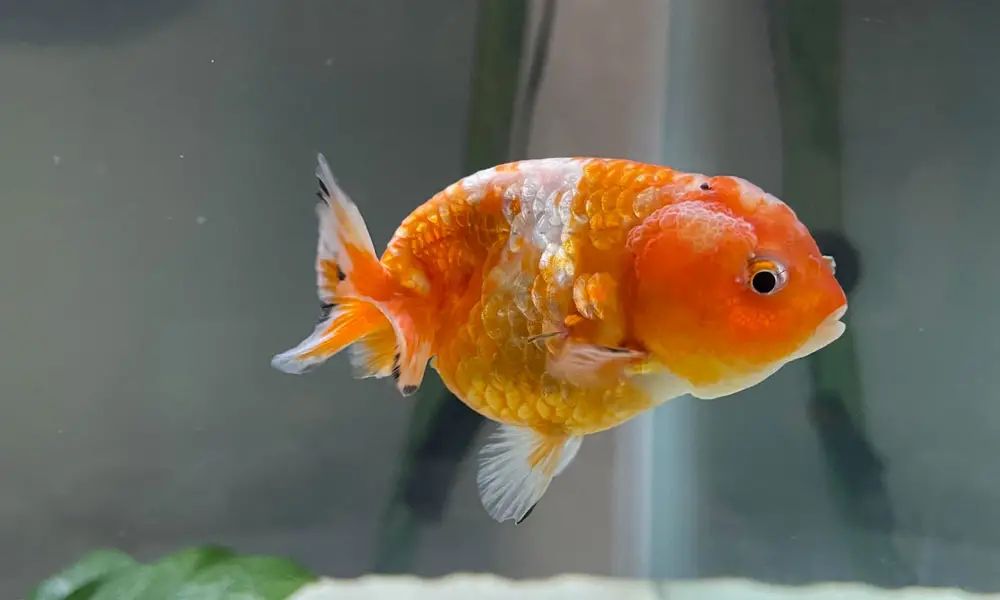
Despite the name, anchor worms in fish are often referred to as Lernea species; they are not actually worms but a group of copepod parasites that attach themselves to their host fish using a hook-like structure on the front of their body and feed on the fish’s tissue.
Diagnose: You will see the female’s small, thin “thread” that resembles white worms hanging from the fish’s body.
Treatment: Anchor worms can be removed manually by carefully pulling them off the fish with tweezers. Alternatively, a 30-minute bath in Diflubenzuron (also known as Dimilin) solution has been approved for Lernea treatment.
Bacterial Infection
Many bacterial infections in fish can manifest as white spots. Here are some of the most common ones:
Columnaris
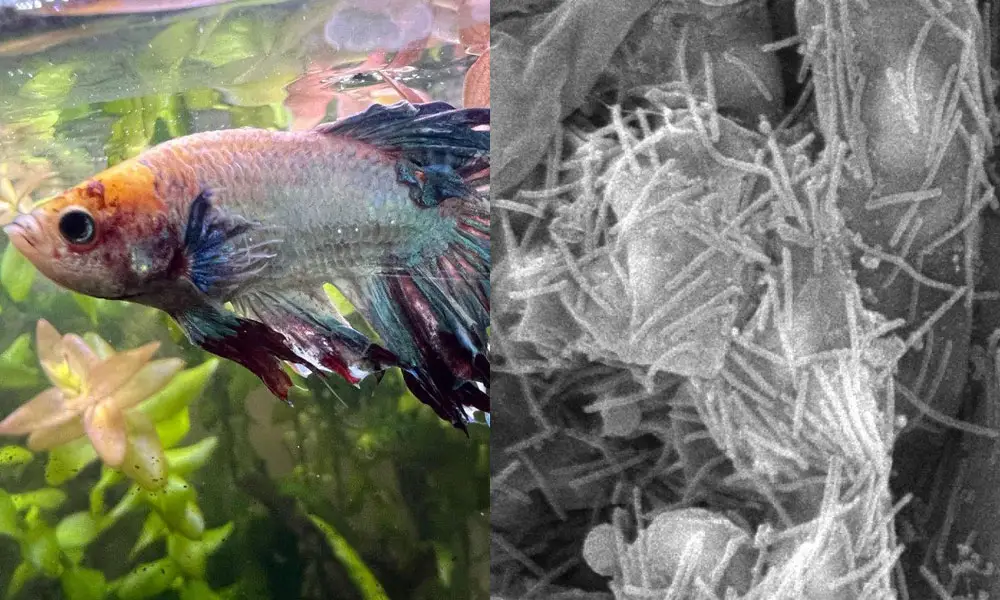
Columnaris, also known as cotton wool disease, cotton mouth disease, or saddleback disease, is a bacterial infection that affects the skin, fins, and gills of freshwater fish, particularly livebearers and catfish.
Flavobacterium columnare, a Gram-negative strictly aerobic bacterium, is the causative agent of Columnaris disease.
Diagnose: The main clinical sign of Columnaris is white or grayish spots on the fish’s head, fins, and gills. Many affected fish will develop cottony-looking lesions on their mouths along with the white patches. Another symptom is a characteristic “saddleback,” where the lesions usually have red edges on the back and often extend down the sides, hence the name.
Most fish suffering from a bacterial infection will “look okay”; they don’t rub or scratch against objects in the aquarium, but they look uncomfortable and listless, stay near the surface, or lay on the bottom of the tank, often with slightly clamped fins.
Treatment: Columnaris can be treated with a combination of Salt or Methylene blue (MB) bath and Nitrofurazone (Furan-2) based medicated food. For more details, read our step-by-step treatment here: Columnaris Treatment.
Fin Rot
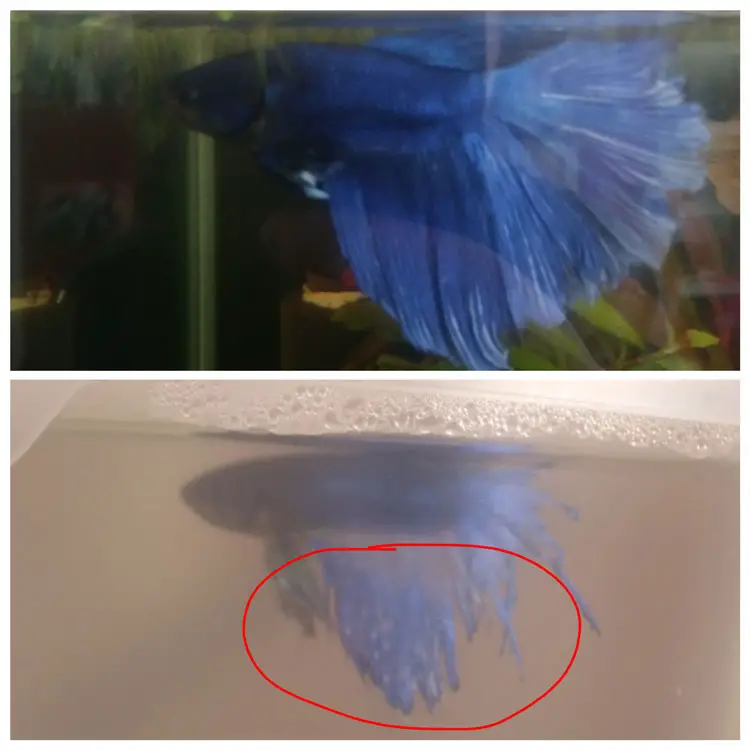
Fin Rot is one of the most apparent symptoms of bacterial diseases in aquarium fish. Clinically, it’s caused by several anaerobic, gram-negative bacteria, including:
- Aeromonas (anaerobic)
- Pseudomonas (aerobic)
- Streptobacillus (anaerobic)
- Salmonella (anaerobic)
- Vibrio (anaerobic)
Diagnose: As the name suggests, the primary clinical signs are frayed fin or tail. Depending on the level of infestation, the fin or tail may be completely disintegrated in life-threatening cases. It’s worth noting that these bacteria can affect other parts of your fish too. For example, black, white, or brown spots anywhere on a fish’s body may be observed.
Treatment: When your fish are at risk of illness, it’s important to investigate the cause before attempting to treat them. Testing the water quality should be the first step. If it fails, you should try to control and remove any possible stress factors in your aquarium before attempting a treatment.
Making your own medicated food by adding broad-spectrum antibiotics like Mardel Maracyn 2, SeaChem KanaPlex, or API Fin And Body Cure has been shown to be more effective against these gram-negative bacterial infections.
Canal Neuromast Syndrome
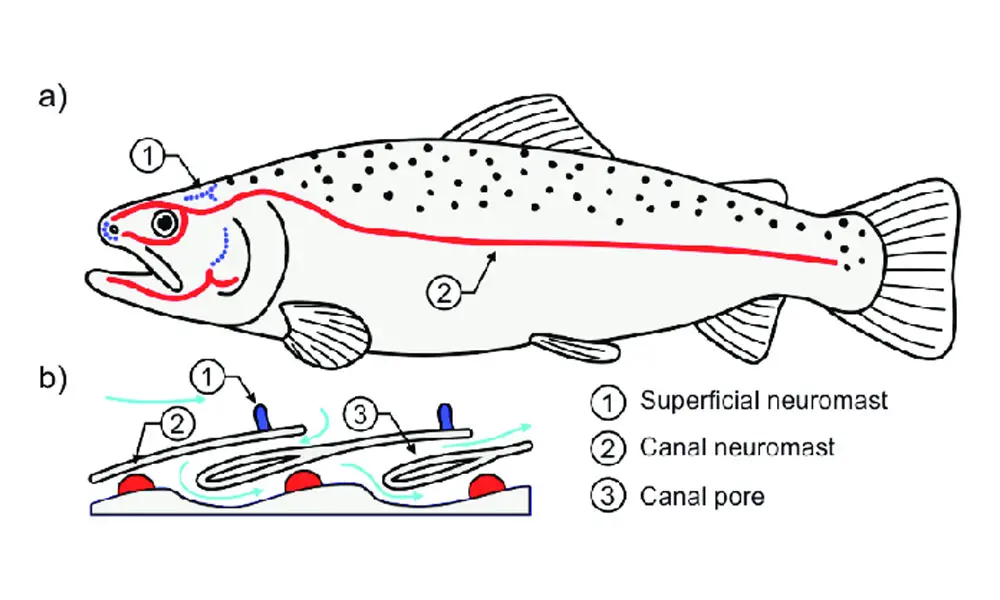
Canal neuromasts are specialized sensory cells found in the lateral line system of fish, which help fish detect vibrations, changes in water flow, and movements of other fish and prey.
Canal neuromast syndrome is commonly found in small cichlids [7], often presenting with small white spots on both sides of the fish’s head.
Technically, it’s caused by a combination of the following issues: poor water quality, high bacteria count in the tank, internal parasites like Hexamita and Spironucleus, as well as Mycobacterial Infections (aka Fish Tuberculosis).
Diagnose: These bacteria and internal parasites can reside in the fish’s intestines or other internal organs and cause various symptoms, such as weight loss, erratic swimming, and lethargy.
Some parasites can also cause visible symptoms, like white dots protruding from the fish’s body. These fuzzy spots are about three times the size of Ich spots and exhibit identical patterns on both sides of the head or run along the base of the fish’s dorsal fin.
Treatment: To treat Canal Neuromast Syndrome in fish, improve water quality and upgrade filtration with good media first. In addition, dosing Seachem KanaPlex and MetroPlex in fish food should be part of your treatment plan.
Fungus
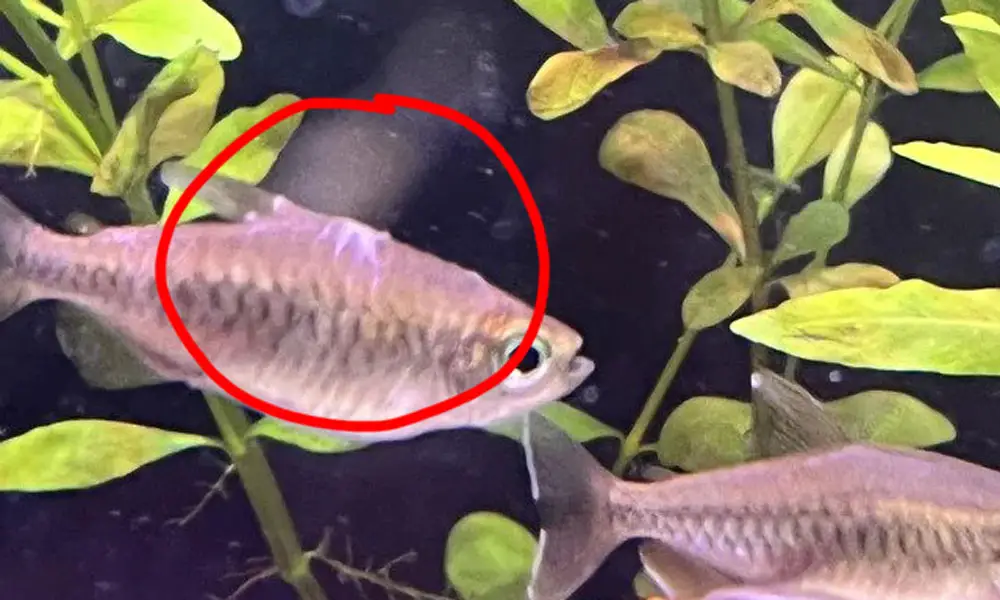
Fungus, also known as water mold or cotton mold, can lead to serious complications if left unchecked. The fungal pathogens are mainly from the genera: Saprolegnia, Achylia, and Branchiomyces. Several opportunistic species of Saprolegnia are responsible for the infection.
Diagnose: Saprolegnia, Columnaris, and Ich can often look alike, making them difficult to tell apart. Compared to the white spots of Ich, Saprolegnia spots tend to be bigger and fuzzier. If you want to learn more about how to differentiate between Columnaris and Saprolegnia, refer to our guide: Fungus Vs. Columnaris in Fish.
Treatment: Unlike bacteria, Saprolegnia spp. don’t respond well to these antibiotics. Don’t worry, there are various antifungal medications for fish available in the market. Acriflavine is effective against early stages, and Malachite Green or Sulfathiazole can be used for severe infections.
Viral Disease
Viruses are simple organisms that invade the fish’s cells and cause damage in the process. A few types of viruses can infect many freshwater and marine fish, but the most common one is lymphocystis.
Lymphocystis
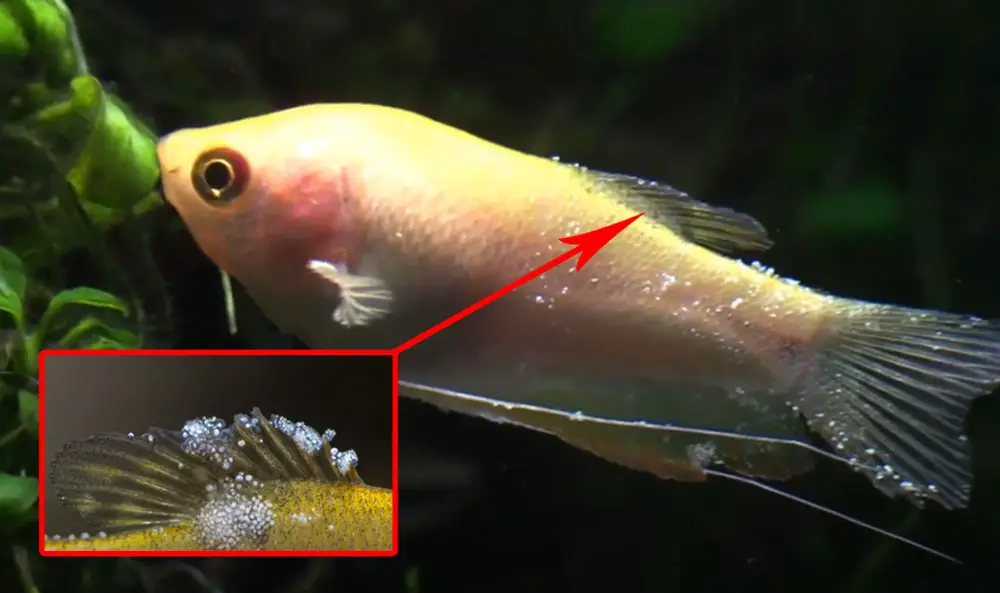
Lymphocystis or Lymphocystis disease virus (LCDV) is a chronic disease caused by a DNA virus of the Iridoviridae family. This disease usually affects advanced fish, such as cichlids, killifishes, gouramies, clownfish, and many others, and is rarely seen in less-advanced fish, including catfish, goldfish, koi, barbs, or danios [8].
Diagnose: Generally, this disease is identified by the most obvious sign of small to moderate-sized, irregular, white bumps that can be mistaken for Ich. These growths may present in a cluster of dozens on the fish’s body, fins, and oral cavity. Without scraping and examining under a microscope, it is hard to distinguish this virus from Ich.
Treatment: There is no cure, but LCDV is a self-limiting disease, meaning these unsightly growths may appear over days in warmwater fish species and up to 6 weeks in coldwater fish.
Wrapping Up
As you can see, it’s not just Ich that causes white spots on fish. There are a variety of other issues that can lead to similar-looking symptoms, and proper diagnosis is key for successful treatment.
If you suspect your fish has white spots, start by doing a basic water quality test and observe the behavior of the infected fish. If you don’t see any improvement after a week, it may be time to consult a professional veterinarian.
If you have any questions about white spots on fish or other fish health concerns, feel free to contact us; we’re more than happy to help you out.
References and Suggested Reading
- Ichthyophthirius multifiliis (White Spot) Infections in Fish [University of Florida]
- Ichthyophthirius multifiliis [sciencedirect]
- Aquarium Ich Disease | Ichthyophthirius Multifilis & Cryptocaryon in Fish [Americanaquariumproducts]
- Fin Ray Fractures in Messel Fishes [Kaupia: Darmstädter Beiträge zur Naturgeschichte 18]
- A Disease of Freshwater Fishes Caused by Tetrahymena corlissi [University of Nebraska]
- Peritrich [wikipedia]
- Spots on Head [AquariumScience]
- Lymphocystis Disease in Fish [University of Florida]
